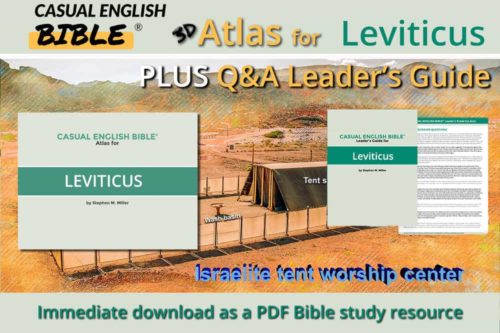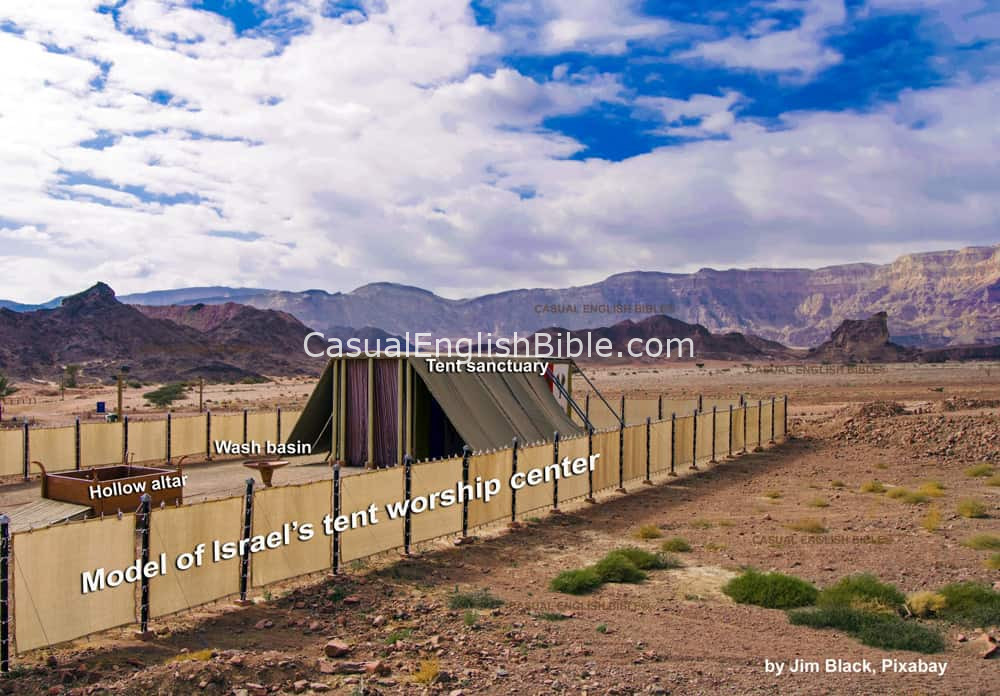Leviticus 3
How to sacrifice a peace offering
What to burn
1When you sacrifice a male or female animal as a peace offering, [1] make sure there’s nothing wrong with it. No defects allowed. 2Rest your hand on the animal’s head. [2] Then kill the animal near the Meeting Tent entrance. Aaron’s sons the priests will splash some of the animal’s blood around all four sides of the altar. 3You’ll have to present part of the animal for the priest to burn on the altar when you bring this offering to the LORD. You’ll give the fat [3] on the intestines and internal organs. 4You’ll give the kidneys [4] and the fat on them, along with the long lobe of the liver. [5] 5Aaron’s sons will burn all of this in a wood fire on the altar. It will produce a sweet aroma for the LORD. 6If you decide to sacrifice a sheep or a goat as a peace offering to the LORD, whether it’s male or female, make sure there’s nothing wrong with the animal.When it’s a sheep
7When you choose a lamb as your offering, bring it to the LORD. 8Rest your hand on the animal’s head. Then kill it near the entrance into the Meeting Tent. Aaron’s sons will take some of its blood and splash it on all four sides of the altar. 9Here’s what you need to give the priest to burn in this peace offering to the LORD. Give him the animal’s fat. That includes all the fat on a thick tail, [6] which you need to cut off at the backbone. 10Bring both kidneys and the fat attached to them. Also bring the long lobe of the liver. Remove all of this from the animal so the priest can burn them on the altar. 11The priest will burn it on the altar, turning it into smoke as an offering to the LORD.When it’s a goat
12If you decide to sacrifice a goat, bring it to the LORD. 13Rest your hand on the goat’s head. Then kill in near the entrance into the Meeting Tent. Aaron’s sons will splash some of its blood around all four sides of the altar. 14Here’s what part of the animal you need to bring in a peace offering to the LORD. Bring the priest the fat in and around the intestines and internal organs. 15Bring both kidneys and the fat on them. And bring the long lobe of the liver, too. 16The priest will burn them on at altar as an offering of food, turning it into smoke and producing a sweet smell to the LORD. All of the best part of the animal—the fat—belongs to the LORD. 17Here’s a law you’re to obey throughout the generations to come: Don’t eat blood or any meat with blood in it. And don’t eat fat. [7]Footnotes
A peace offering is one of several prescribed offerings in Jewish tradition. When Jewish people wanted to give thanks to God for something, such as good health or safety, they would sacrifice a sheep, goat, cow, or bull. They would burn part of the animal, including the kidneys and fat covering the intestines. They would eat the rest in celebration, often with family and friends. It takes a fair number of hungry people to eat a cow. But people were eager to eat meat because it was rare in Bible times for common folks to eat meat, many Bible scholars say.
“When you do this, the LORD will accept your offering. This sacrifice atones for your sins and puts you on good terms with God” (1:4). Jews taught that in God’s eyes, sin was a capital offense. Jewish law, however, says God allowed them to substitute the death of an animal for the death they deserved. “Blood is what brings a body to life. I’ve given you blood to use exclusively on the altar. It atones for your sin—it gets rid of your guilt so you can stay on good terms with the LORD. Blood is the price of your sin” (Leviticus 17:11). The writer of Hebrews says the blood of Jesus was the last sacrifice needed; it paid the price for the sins of all people for all time (Hebrews 10:10).
Fat was considered the tastiest part of an animal—juicy and sweet.
People in Bible times considered kidneys and liver favorite meat, delicious. They also associated these organs with emotions such as joy and grief. Today, people often associate the heart with those emotions. Priests in some ancient religions read signs on livers. A king might order an animal sacrificed before going into battle. Then he would have his priests look at the animal’s liver to see if there was any sign he would win the fight. Ancient clay models of livers were marked with peg holes to show where to look for signs and how to interpret them.
Literally, “finger of the liver.” It’s usually identified as the caudate lobe. There are three other lobes: right, left, and quadrate.
Herders bred fat-tailed sheep in and around what is now Israel and Palestinian Territory. The tail of a mature ram could weigh 20 pounds (9 kg) or more. Fat on the tail was considered the tastiest meat a sheep had to offer.
So, an Israelite wouldn’t order a steak grilled medium rare. But were they never allowed to eat fat, a favorite delicacy of the day? Some speculate that this rule related only to animals sacrificed on the altar. In the Hebrew poem called the Song of Moses, Moses praised God for feeding his people with the best foods, including milk, yogurt, and yummy lamb fat (Deuteronomy 32:14).
Discussion Questions
- 1
BY ROBERT V. HUBER
The “peace offering” sacrifices discussed in chapter 3 of Leviticus differ from those discussed in the first two chapters, but the text is vague about why these sacrifices are made at all. Even the name of such offerings is unclear. Some translators go with Peace Offerings, while others prefer Fellowship Offerings or Wellbeing Offerings. How would you describe these offerings? And in what way do you think these sacrifices promote peace, fellowship, or wellbeing?
- 2
For all the sacrifices discussed in chapters 1 and 2 of Leviticus, only male animals were acceptable as offerings, but in chapter 3 we learn that either male or female animals could be sacrificed for peace offerings. Anyone reading this for the first time is likely to do a double take. Why this sudden reversal of the norm? No reason is offered, but can you guess why female animals were so uncharacteristically accepted for sacrifice in peace offerings?
- 3
For the sacrifices discussed in chapter 1 of Leviticus, doves and pigeons could be offered up (a boon for the poor, who could not afford bulls or sheep). Why do you think birds are missing as potential victims for Peace offerings?
- 4
The chapter closes with a command not to eat food with any blood on it and not to eat fat. Why not eat a rare steak or eat a little piece of juicy fat along the side of a KC strip, or a Sinai shank, or whatever they called a nice cut of meat? In other words, what do you think is behind these commandments?
- 5
LIFE APPLICATION: The Israelites thanked God and celebrated joyful occasions with a Peace Offering. We celebrate Christmas with a family meal and express our gratitude for all God’s gifts with a Thanksgiving feast. If you had a chance to create a special day to express gratitude to God while celebrating and honoring family and perhaps friends, what day would you pick and what would you call it?







